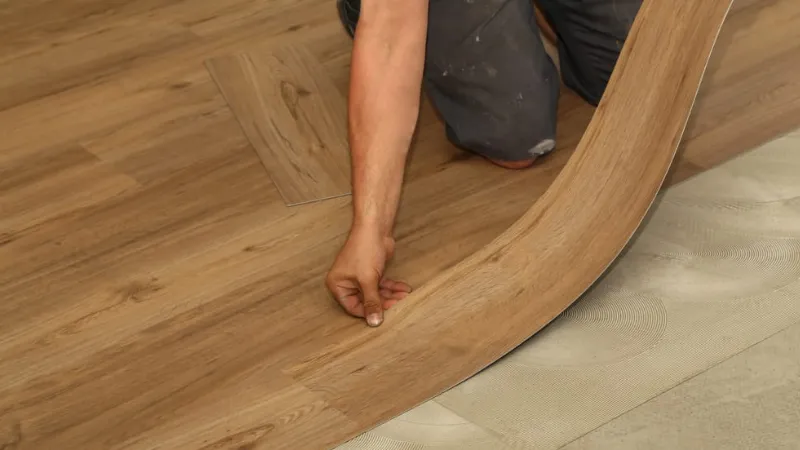Llike most homeowners, you probably don’t want to pull out the old flooring to install the new one, and this has constantly gotten you wondering, “Can you put vinyl flooring over tile?”
Yes, you can, but make sure to fix any large cracks or gaps in the current tile flooring as these problems may affect how smoothly the vinyl will adhere to the surface when installed.
Continue reading to discover more about putting vinyl flooring over tile.
Can You Put Vinyl Flooring over Tile?
Due to recent advancements in the manufacturing process, high-quality vinyl can now be used as a practical and affordable flooring option. This material has steadily gained popularity over the last few years – in 2018, the market size for vinyl flooring reached $25.6 billion. Up until 2025, this value is anticipated to rise by 7.4% annually.
If you want to install vinyl flooring in a room of your home that currently has flooring, you can do so as long as the surface is still flat, smooth, and tightly sealed. Vinyl planks can be easily installed over ceramic tile in rooms that currently have ceramic tile flooring.
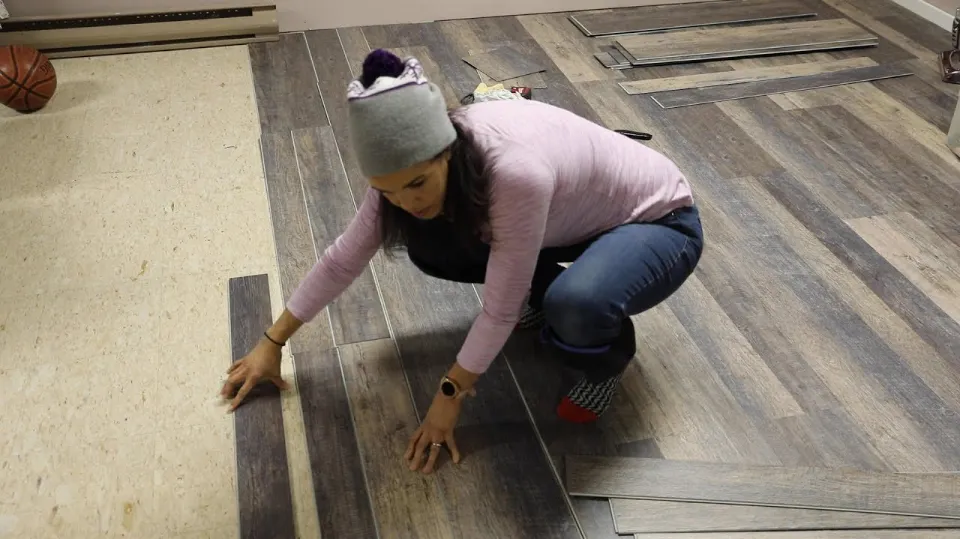
Preparing the Floor
When installing new vinyl flooring over old tiles, it’s crucial to measure the height. The effects of having too-high new floors can extend to adjacent structures. If the new flooring height occupies too much vertical space, for instance, doors and cabinets might not open properly. If this occurs, it is preferable to remove the tiles before putting in the vinyl.
If the other structures in the room are unaffected by the new height, start checking the tiles for cracks and significant gaps. To ensure that the installation of the vinyl flooring goes smoothly, the existing floor must be in excellent condition and have an even surface.
Patch any damaged tiles with mortar first if there are any broken pieces or other mistakes. Check the grout lines between the tiles as well; if they are too deep, you can feel them right through the vinyl. How well the vinyl adheres to the tiles can also be influenced by the grout lines. In the event that the grout lines need to be fixed before applying the vinyl over the tiles, there are tile grout mixtures on the market.
Installing the Vinyl
It’s time to install the vinyl floors over the prepared tiles. It is best to choose thicker vinyl planks if you decide to use them. Although these materials cost a little more than the thinner vinyl planks, they are less likely to sag into the tile subfloor’s grout lines.
If you prefer glue-down vinyl flooring, another choice to think about is vinyl planks with an easy-lock system. It costs about as much to install the glue-down vinyl as it does to have the tiles removed first. Before applying the adhesive and putting down the vinyl, the process calls for applying a skim coat over the tile subfloor.
Suggested reading: What color grout to use with gray tile? Overall, some colored grout contrasts with gray tiles: light gray, off white, taupe, brown, charcoal gray, cream, dark gray, and gray porcelain.
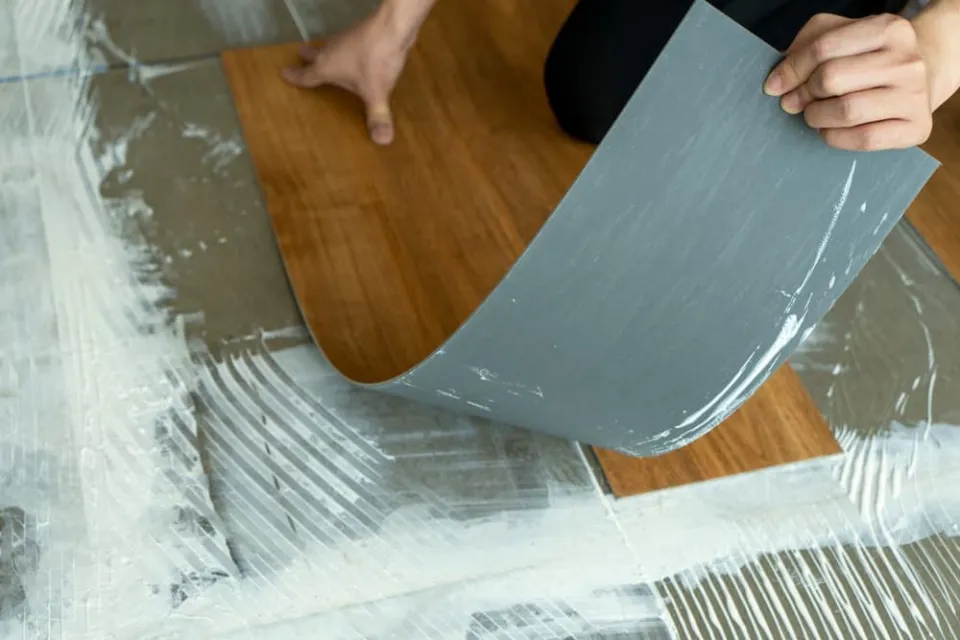
Why You Should Replace the Tiles With Vinyl Flooring?
Because it requires little maintenance and is long-lasting, vinyl flooring is a great choice for various rooms in a home. Additionally, they are waterproof, which makes them a great option for bathrooms, basements, and kitchens.
If you’re considering changing the tile floorings at home, here are a few reasons why vinyl is the right pick:
- Over most other types of flooring, vinyl planks are more affordable. Additionally, installing them in a home doesn’t cost much money or effort.
- Over time, ceramic tiles are susceptible to cracking. When children and pets are present at home, vinyl flooring is less vulnerable to damage.
- Vinyl can imitate the appearance of a variety of surfaces, including wood, stone, brick, tiles, and more, thanks to the photographic technology used in its production.
- There is no need to wait for the floors to dry after the vinyl planks have been installed. Following the installation of the vinyl, homeowners can begin using the space.
- Vinyl flooring is simple to take out, making it a great option for someone who frequently remodels their home to keep up with fashion.
Which Type of Vinyl Flooring Should You Put over Tile?
Installing vinyl flooring over tile is an excellent idea because, by itself, vinyl is so thin, thus it doesn’t provide much insulation. The ceramic subfloor beneath provides additional padding, making the ground much more comfortable to walk on.
However, there is a drawback to this, the most prevalent of which is the elevated floor height. However, you will only encounter this problem if you are installing vinyl planks. If you choose sheet or tile flooring, this will be less of an issue because these two raise the level of the floor by a very small amount.
The problem with raised floors is that you may be required to cut your doors shorter, undercut door jambs, or perform other difficult procedures to keep everything working as it should. Sometimes you may also need transition strips at points where the vinyl borders other floors.
Also, keep in mind that the majority of tile floors today have radiant heating to keep the flooring warm during the cold season. Your options for the type of vinyl flooring you should install in your home may be limited if yours is set up with this system.
Vinyl tiles or sheets that need to be glued down, for instance, are not recommended in homes whose floors have radiant heating systems. The high temperatures usually soften the adhesive, reducing the vinyl’s ability to stick well to the subfloor, which causes it to warp or wear prematurely.
Installing floating vinyl planks is advised instead for floors with radiant heating, so long as the temperature of the floor doesn’t rise above 85°F.
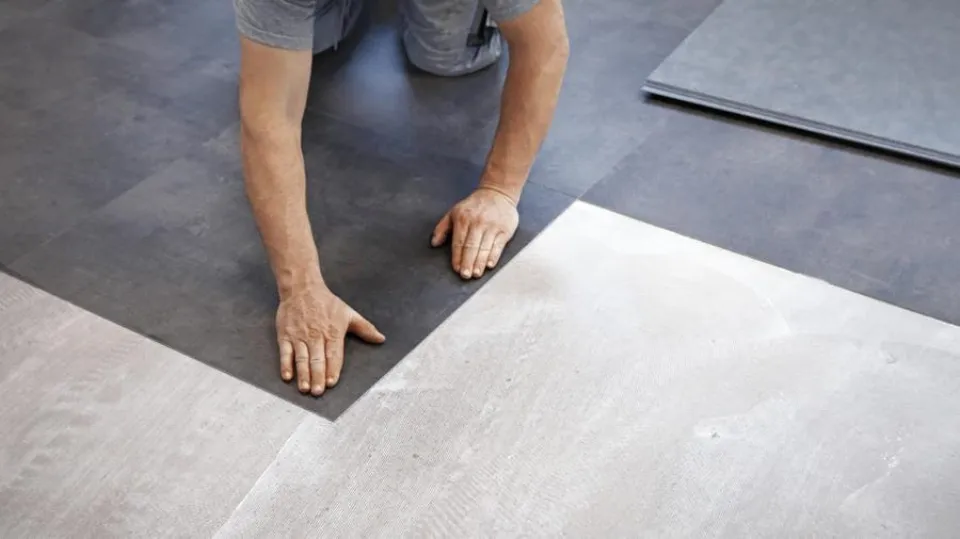
Maintenance of Vinyl Flooring
Vinyl flooring needs to be maintained. This includes:
- Picking up loose dirt, vacuuming, and sweeping
- Putting a rug down by the doors so people can wipe their feet before coming in
- Adding an area rug for high traffic areas, runner for a hallway, and a stair runner for stairs
- Wipe up spills as soon as they happen so they don’t seep into the floor
- For floor cleaning, avoid using soap or detergents. For a list of recommended cleaning agents, consult the manufacturer’s guide.
Criteria for Putting Vinyl over Other Floor Coverings
In most cases, you can install vinyl flooring on top of existing flooring. In general, there is nothing about the lower floor covering’s material that prevents it from serving as a substrate for the upper vinyl flooring. It is acceptable to use that lower floor covering as long as it satisfies all of the requirements for a suitable substrate.
Consider the thin, supple, and adaptable nature of vinyl flooring. Unlike thicker, rigid floor coverings, vinyl flooring cannot effectively cover or smooth out substrate flaws. Solid hardwood or engineered wood, for example, can bridge gaps, holes, and seams, as well as smooth over surface embossing.
Any of those flaws could telegraph, or transfer, to the vinyl flooring above, if the flooring is made of vinyl. Even worse, significant holes might eventually turn into craters in some areas of the vinyl flooring.
Before installing vinyl flooring, it’s common to use a substrate of large-format boards, like 1/4-inch-thick, 4-foot by 8-foot sheets of plywood or MDF particle board. This substrate is an addition to the subfloor. Because they add some strength, have few seams, and can bridge over surface embossing and small holes, large-format underlayment sheets are ideal for use with vinyl flooring.
- Sturdy and Solid
Removing floor coverings helps the installer assess the condition of the subfloor. It is challenging to determine if the subfloor is cracked, rotted, or in poor condition if the current floor covering is left in place. Check to see if the subfloor, current flooring, and any potential underlayment are strong enough to support the installation of the vinyl flooring.
- Seamless or Tightly Seamed Flooring
Large-format boards offer a smooth installation surface with few seams. Six underlayment boards would be used in a kitchen floor that is 16 feet long by 12 feet wide, for instance, leaving only a few seams.
As a substrate, a solid hardwood floor might have hundreds of seams. If that hardwood floor has other problems, such as wide gaps between the floorboards (often the result of water damage), it would be unsuitable as a substrate for the vinyl flooring.
- No Holes or Other Imperfections
You should sand down any high points in the substrate and fill any low points. Even though minor flaws might not be immediately visible on the surface of the vinyl flooring, they might eventually become visible as low craters or hills that appear on the surface.
- Little or No Embossing
Surface embossing is one of the desired aesthetic features of some types of tile, laminate, and vinyl. Embossing provides slight highs and lows that help make the floor covering look more realistic (like the material they are emulating, such as wood) or simply to aid their appearance.
At some point, vinyl flooring’s surface may pick up on noticeable embossing. Thinner boards with a thickness of 3.5 mm or less may be affected, though typically thicker (6.5 mm) vinyl flooring is exempt from this rule. The lower texture will be quickly detected by thin vinyl, which will then telegraph it to the surface.
- Dry Underneath
Since the moisture cannot escape, it may grow mold and mildew if moisture is trapped between vinyl flooring and its support. Newly poured concrete flooring must fully cure and dry out before vinyl flooring is laid on top.
- Acceptable Height
Height becomes a problem whenever flooring is added on top of flooring. Will the higher version be too high if the earlier version was presumably a height that was acceptable? One of the better options in this regard is to use vinyl flooring as the top layer because it adds less height than other types of flooring.
Suggested reading: Types of flooring you can put over ceramic tile includes ceramic tiles, laminate flooring, vinyl flooring, carpet, epoxy coating, cork flooring, wood flooring, and new fired tile. But, why choose these floorings? Below will give specific reasons.
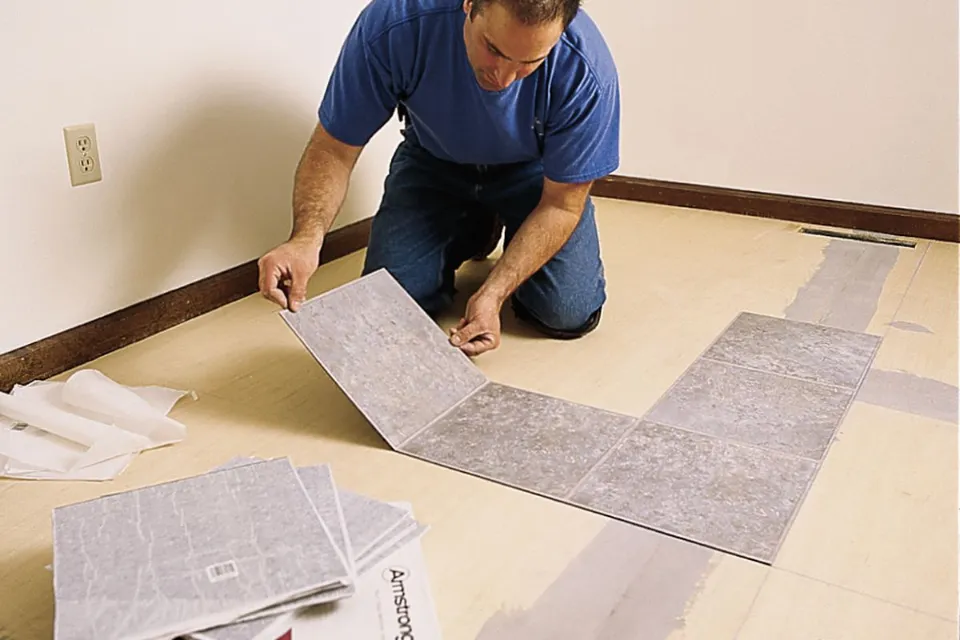
FAQs
Should You Remove Tile before Installing Vinyl Flooring?
The installation of new flooring on top of any chips or cracks in your ceramic tile may also be problematic. Any of these issues should be fixed prior to installation, according to our advice. If your existing floor has any of these issues that cannot easily be fixed, removing the tile before installing the new vinyl plank is best.
Can You Put Vinyl Flooring over Old Tiles?
The short answer is yes, you can install vinyl flooring over existing tiles. However, just like with any vinyl flooring installation, the tile surface needs to be properly ready before installation.
Is It Hard to Install Vinyl Flooring over Tile?
If you want to remodel a room in your house with vinyl flooring, they can be installed over existing floorings if the surface is still tightly sealed, smooth, and flat. Vinyl planks can be easily installed over ceramic tile in rooms that currently have ceramic tile flooring.
Do You Need Underlay for Vinyl Flooring on Tiles?
Underlay. Most vinyl floors don’t need an underlay. A well-cushioned vinyl floor should be fine on its own if the surface you’re lying on is level and smooth. Our Luxury Vinyl Click flooring is laid using the same as technique as laminate options in that it’s loose laid creating a “floating floor”.
Is It OK to Put Luxury Vinyl over Tile?
Luckily, luxury vinyl tile flooring is a stylish and durable solution that can be installed over your current tile, which will save you both time and money. LVT is not only low maintenance but also incredibly simple to install.
Summary: Can You Put Vinyl Flooring over Tile?
Tile can be easily updated by installing vinyl flooring over worn-out, outdated ceramic tiles. In addition to requiring little manual labor, the tiles beneath offer additional insulation.
You can install vinyl planks, tiles, or sheets on a ceramic subfloor. However, because they are thin and don’t raise the floor’s height like planks do, we advise using tiles or sheets instead. Just make sure to fill any tile grout lines and clean the surface before installing your new floor.
If you have any questions, please leave a comment. My Prime Home tries to give you the best home improvement information. Don’t forget to share the post. Thank you for reading.
Read about
